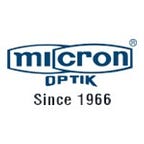What to Consider While Choosing a Digital Microscope Camera?
There was no simple method to share what you saw under a magnifying lens since it required another person to look into the instrument actually.
Individuals continuously understood that the impacts of analysis, regardless of whether histopathology, hematology, cytology, microbiology, or different applications, should have been recorded.
The best way to keep up records and offer pictures is to catch them with a reasonable camera. This is the way the possibility of a computerized camera for magnifying lens eyepiece appeared.
Excellent pictures caught from pathology tests changed clinical practices. Patients and specialists could now utilize them for second conclusions and tumor sheets. Printing out pictures dispensed with the need to convey or deliver slides for analysis.
The computerized pictures likewise increase the value of the data utilized for distributions and instructing. In any case, picking the best magnifying instrument eyepiece camera gets overwhelming with the plenty of alternatives accessible.
Everyone accompanies a variety of particulars and specialized subtleties, settling on the question of your decision. To pick the most proper camera that will oblige your necessities, basically, ask yourself a couple of inquiries.
1) What Contrast Techniques You Will Be Needing?
There are a couple of core values, to begin with.
On the off chance that your calling expects you to catch just brightfield pictures, a great shading camera would be proper.
On the off chance that you need to catch fluorescent pictures once in a while, SCMOS cameras prove to be useful, however, they are not reasonable for long-openness applications, such as catching bioluminescent pictures.
There is likewise a choice to be made whether you require a monochrome or shaded camera. Monochrome cameras are liked while working with fluorescent-named tests.
2) What Is the Level of Resolution Needed?
In microscopy, the highlights needed for an advanced camera for magnifying lens eyepiece are very particular from what you would search for in a buyer camera.
Picking a camera with higher megapixels won’t be sufficient to fulfill your necessities. A few components like chip size, outline rate, and pixel size should be thought of.
Lower amplification — if your motivation is to catch pictures of cells and tissues in routine applications, amplifying them up to 40x in brightfield, the proposal would be in any event a three-megapixel camera chip.
Any medium-range pixel size ought to be sufficient to convey the picture quality you need. A cooling highlight isn’t obligatory.
Most elevated amplification — researchers hoping to investigate the subtleties of cores in 100x oil, or considering hematology, or noticing the developments of microorganisms in microbiology, need a top-of-the-line goal.
The best mix that can catch the most genuine picture is a camera with upgraded pixel size and a good number of megapixels.
Live picture — live pictures are expanding in significance for instructing and tumor board conversations. They can be projected on a screen with or without a PC.
In any case, for a smooth visual of the infinitesimal picture, the camera needs to have a high edge rate (fps or edges each second). Mechanical headway has additionally made it simpler to straightforwardly interface the cameras to a screen without a PC.
3) Which Interface Will You Be Comfortable With?
A camera eyepiece magnifying lens can be associated with PCs through USB 2.0, USB 3.0, or firewire.
It is critical to sort out whether your PC has coordinated with attachments or can be overhauled. Just a high-productivity PC will be viable to adapt up to imaging errands.
On the off chance that you need live camera pictures oftentimes for educating or conversations that should be projected straightforwardly on a screen, your optimal decision would be a camera with an HDMI association.
They are not difficult to interface with screens. Additionally, pay special mind to cameras with high fps to play the live pictures easily.
A few groups would prefer not to be tried to associate with a PC each time they are utilizing a computerized eyepiece for the magnifying instrument. They decide on the cameras with an sd card space to keep the pictures saved.
4) What Technical Details to Look for in a Camera Chip?
Is quick casing rate (CMOS) what you are searching for or high affectability (CCD)? CMOS (correlative metal-oxide-semiconductor) and CCD (charge-coupled gadget) are the two terms usually heard while paying special mind to contributes microscopy cameras.
They have their own benefits and burdens. Previously, CMOS sensors were not an incessant decision as they neglected to effectively change over the approaching light into electrical signs. Along these lines, individuals proceeded onward to CCD sensors, which turned out fantastically for low light applications.
In any case, it was before long understood that CMOS chips permitted a higher casing rate, making them ideal for live pictures.
The wide assortment of decisions with unpredictable, interrelated key components frequently will in general perplex the purchasers.
It is ideal to put together the choice with respect to the prerequisites for your infinitesimal perception.
The steadily propelling innovation serves higher picture quality and suitable picture preparing that has empowered analysts to get through the customary constraints of infinitesimal imaging and find the obscure.
If you are looking to import a huge number of microscopes from the best laboratory microscopes manufacturer and supplier in Ambala Cantt, India.
